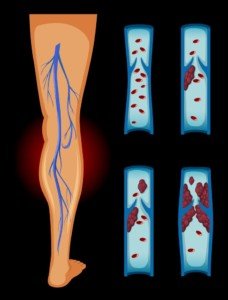
Running with a DVT? Risky or safe?
“Since running would significantly increase arterial flow to the lower extremities, and therefore venous return is also increased, it may be safer to avoid running in the ACUTE (when the clot is fresh and prone to breaking off) period,” says Seyed-Mojtaba Gashti, MD, a board certified vascular surgeon with Broward Health Medical Center in Florida.
That makes a lot of sense, even though it’s not the news that an avid runner wants to hear.
Dr. Gashti continues, “After 2-3 weeks, these clots become more chronic, and risk of embolization would be decreased.”
There is another important factor to consider, however:
“What I will be more concerned about in someone with an acute DVT and running is that they most likely would be on anticoagulation (coumadin), and they have to be careful not to fall or sustain any other injury, since the risk for massive bleeding would be increased while on this medicine.”
Signs of a DVT

- Unexplained redness in a localized area of the leg, particularly the calf
- Soreness or discomfort in that area–not just when walking, but also at rest; sitting down or lying down does not relieve the pain.
- The area (which may not be red) seems unusually warm to the touch
- Half of DVTs do not present with symptoms
Risk Factors for These Blood Clots
There are many, but the chief ones are:
- Prolonged air travel in combination with immobility on the flight (not getting up frequently to keep the blood circulating well in the legs.
- The risk heightens during long plane flights when the flyer is dehydrated.
- Obesity
- Smoking
- Current use of birth control pills
- De-conditioned (out of shape) body
- Recent abdominal or joint replacement surgery
If you’re a runner and have recently sustained a very long plane flight, and you develop a mysterious cramping or pain in a leg, especially a calf, pay very close attention to this.
It would be a safe choice not to run until you’re sure that you don’t have a DVT.

Dr. Gashti specializes in the diagnosis and treatment of vascular disease including abdominal and aortic aneurysm.
 Lorra Garrick has been covering medical, fitness and cybersecurity topics for many years, having written thousands of articles for print magazines and websites, including as a ghostwriter. She’s also a former ACE-certified personal trainer.
Lorra Garrick has been covering medical, fitness and cybersecurity topics for many years, having written thousands of articles for print magazines and websites, including as a ghostwriter. She’s also a former ACE-certified personal trainer.
.











